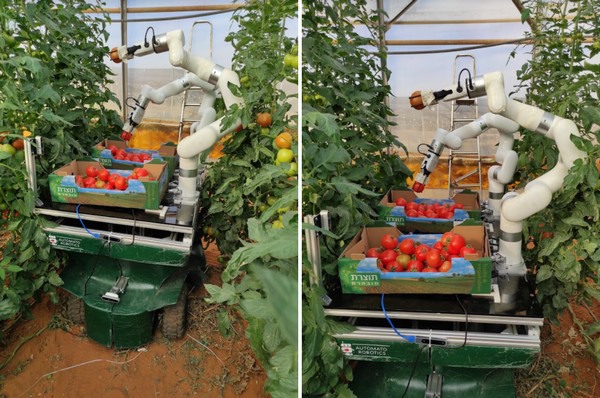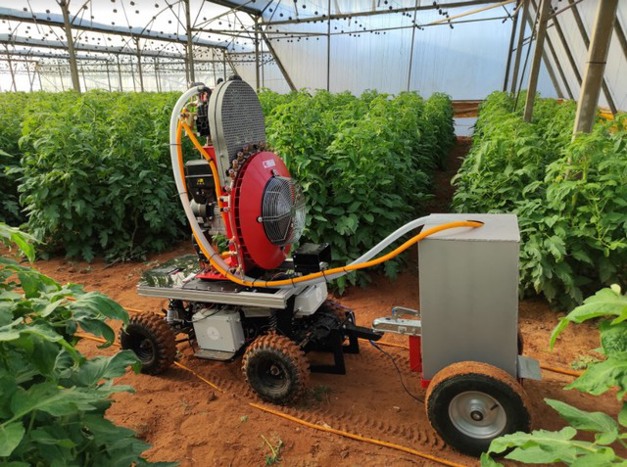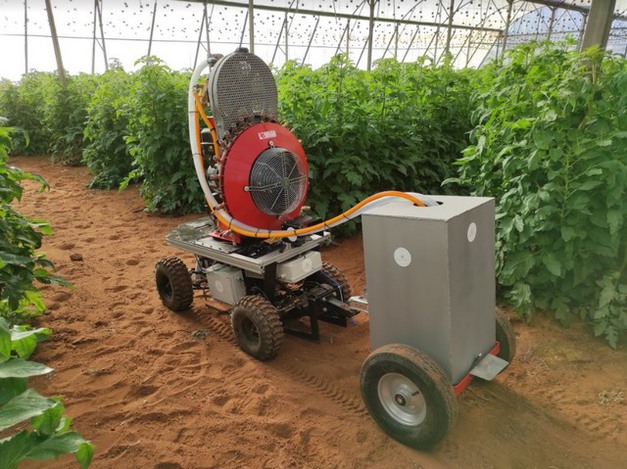For years, growers have been struggling with labour shortage. Even before COVID prevented seasonal labourers to work abroad, growers did not always have enough employees to get the job done. Employing a multi-functional robot instead would solve many of these problems. After all, robots can not only solve the continuous labour shortage in the sector, but will also raise productivity levels while leaving a decent salary for the human workers.
Solution
While this may sound like an utopia that can only be realized for rich, high-tech multinationals, robot labour will soon be available for passive greenhouse growers too. If it were up to Dror Erez, CEO of Automato Robotics, every grower, whether he owns a small, medium-sized or large company, will soon be able to afford a multi-functional robot tool. “Automato Robotics is helping to solve the international labor crisis in agriculture by providing affordable robots to every farmer. The cornerstone of our solution is a robot platform that can drive in off-road conditions and operate in greenhouses. Our first application is a tomato harvester attachment, increasing harvest availability, reliability and quality. Our second attachment is an autonomous sprayer application. This way, automatic labour will provide more safety as people are kept away from the chemical crop protection”.

Passive greenhouses
Very few robots have already been used in active greenhouse companies. Tomato harvest robotic application is under development by at least 3 other agritech companies, but only for active greenhouses. Automato is not the first agritech company to develop this service. Their innovation lies in the fact that also passive greenhouses, that form about 90% of the greenhouse market, can profit from their work too. “Our robot platform is the only solution for autonomous farming in passive greenhouses”, Dror argues. “We believe that our robot will be the first to operate in passive greenhouses, spearheading both autonomous spraying and autonomous tomato harvest. We strongly believe in this strategy because we put affordability as our prime concern. Why bother developing a state-of-the-art robot if no one will be able to afford it?”

Tomatoes
Although the focus has mostly been on the tomatoes sector for robot implementation, Automato’s robot can be used in other sectors too. As the purchase of multiple robots will be a costly event, a multifunctional robot might solve this problem. Automato’s robot platform mounts various robot applications that will render more efficiency to its user, as it supports the growth cycle of multiple crops. This application is going to be tested in Spain, as one of the worlds largest areas with passive greenhouses.
“Our message is one of cooperation. We want to partner with all agriculture robot providers to enable their applications to operate in the passive greenhouse segment”. The first harvester application will probably be available in 2022. The automatic sprayer will be launched before that, entering the market by the middle of 2021.
Dror is keen to express that his robot has been tested under the hardest of circumstances, and is now trained to detect even the best hidden vegetables. The desired initial picking rate of 90% will hopefully improve over time due to the smart machine learning: the more the robot is used, the better it gets without any additional costs. “We hope that our robot platform will enable the other robot greenhouse applications which are under development for active greenhouses, to quickly be deployed in passive greenhouses as well”.

For more information:
Automato Robotics
http://www.automatorobotics.com/
